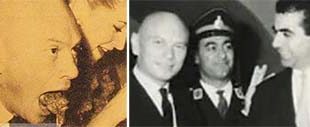On June 3, 1989, Ayatollah Ruhollah Khomeini, the founder of the Islamic Republic of Iran and its Supreme Leader since 1979, passed away after a long period of illness. His death marked the end of a defining chapter in modern Iranian history—a chapter that had seen a monarchy overthrown, a theocratic state established, and a revolution that changed the political landscape of the Middle East forever. But it was not only Khomeini’s life and leadership that captivated the world; it was also the extraordinary scale and symbolism of his funeral that drew unprecedented global attention.
This was not merely the passing of a political figure—it was the loss of a spiritual leader revered by millions. The funeral ceremonies that followed were a testament to the depth of his influence and the intensity of collective national grief. What unfolded in the days following June 3 became one of the most extraordinary and chaotic moments in modern history, culminating in the largest funeral procession ever recorded, attended by more than ten million people.

